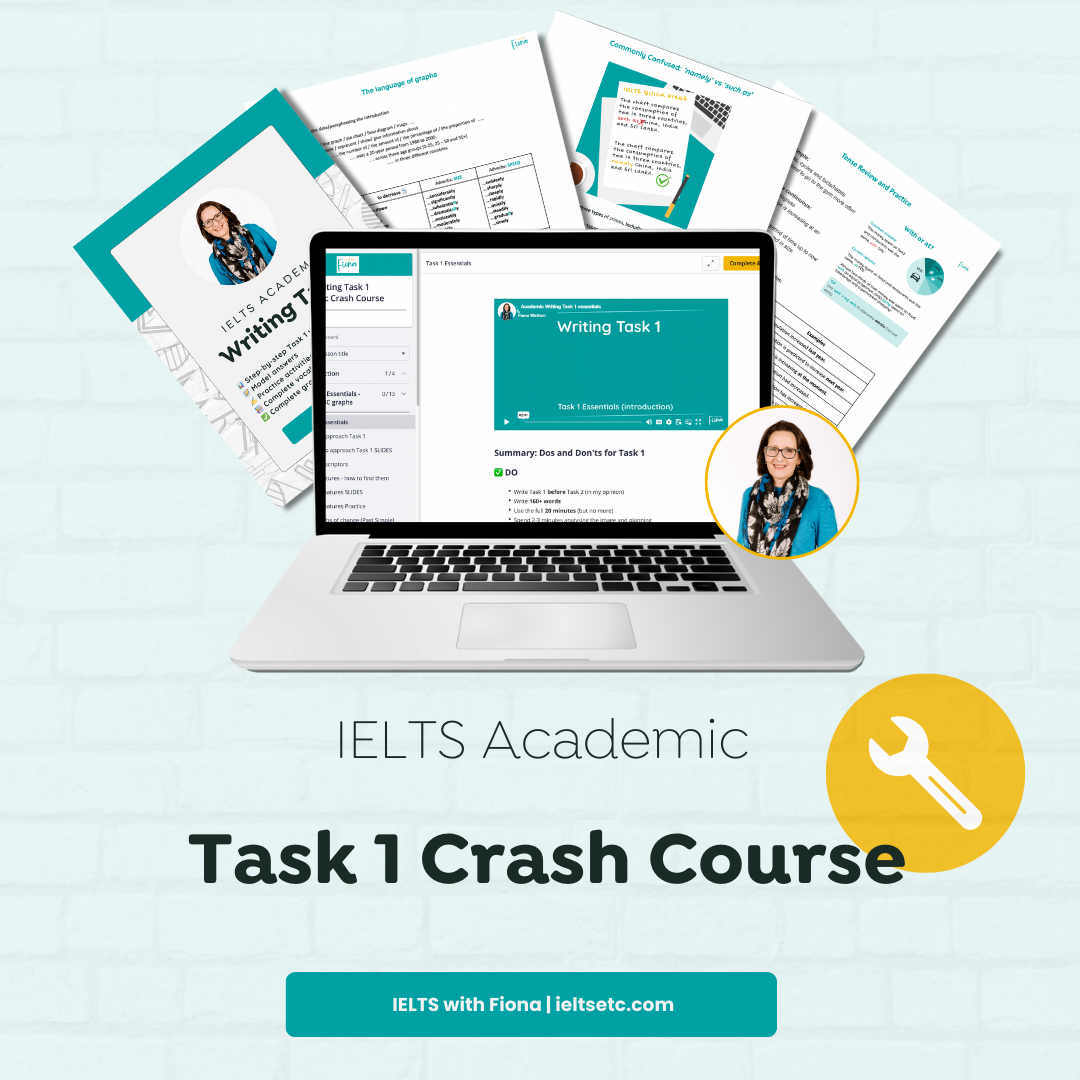Here’s how to meet the examiner’s expectations and raise your score in Academic Writing Task 1.
1. Paraphrase the introduction smartly 🔄
Don’t change every word - it will sound unnatural.
Do use accurate synonyms (e.g. 'shows' = 'gives information about') and change word forms (e.g. 'the production of oil' → 'how much oil was produced').
💡 Tip: Group countries into regions (e.g. 'in France, Italy and Spain' = 'in 3 European countries') and vary how you describe time periods (e.g. 'from 1995 to 2015' = 'over a decade' or 'over a ten-year period')
2. Write a clear overview 👀
Don’t confuse the overview with the introduction.
Do give the “big picture” - even if that means saying there was no change or no correlation.
💡 Tip: Start with “Overall…” so the examiner knows it’s your overview.
3. Describe data, not opinions 📏
❌ Don’t explain why trends happened (e.g. 'due to the global financial crisis').
✅ Do describe objective facts, using precise language (e.g. 'sales fell sharply').
4. Make comparisons both ways 📈📉
Don’t just describe trends over time (horizontally ↔️)
Do compare highest and lowest figures too. (vertically ↕️)
💡Tip: Draw on the graph in the paper-based test to spot key features.
5. Include data wisely 🧮
Don’t list every small change - it’s boring and not analytical.
Do summarise and round numbers (£489.93 → 'just under £500').
6. Summarise patterns 🔍
Do use language like 'doubled' and 'halved'.
💡Tip: Add figures to be more specific (e.g. 'with 2 million visitors in 2005').
7. Hit the word count ✏️
Don’t risk being underlength - some words from the task don’t count.
Do practise writing well over 150 words so you never waste time counting in the exam.
Want to see real examples of these tips in action?
Join my Bronze Membership for full lessons, model answers, and practice tasks.


Comments ()